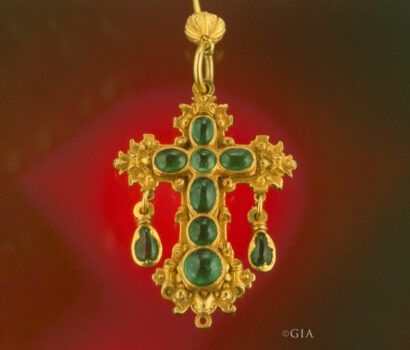The Treasure of the Nuestra Señora de Atocha
| Invest in Hidden Masterpiece: Rare Antique Oil Paintings For Sale. Limited Originals Available 💰😊 Are you looking for authentic hidden masterpiece? Explore old master antique oil paintings from the Renaissance and Baroque eras. From 16th-century portraits to 18th-century landscapes. Authenticity guaranteed, Old Master antique oil paintings for sale. Shop Now! 🎨 Renaissance And Baroque Art Landscape Antique Paintings Old Master Portrait Paintings |
Few stories in maritime history capture the imagination quite like the tale of The Treasure of the Nuestra Señora de Atocha. A legendary galleon of Spain’s treasure fleet, the Atocha is remembered not just for the wealth it carried but also for the tragic fate it suffered and the remarkable story of its rediscovery centuries later. Its story intertwines themes of exploration, colonial ambition, disaster, and relentless human pursuit for gold and glory.
The Story of the Nuestra Señora de Atocha
The Nuestra Señora de Atocha was part of the Spanish treasure fleet system during the early 17th century. Spain, at the height of its colonial empire, relied heavily on fleets of galleons to transport precious metals, gemstones, and other valuable cargo from its colonies in the New World back to Europe. These ships were heavily armed but faced perilous voyages across the Atlantic Ocean, threatened by storms, pirates, and the unpredictable currents of the Caribbean.
The Atocha, named after a church in Madrid, was built for one purpose: to transport wealth from the Americas to Spain. On its final voyage in 1622, the ship sailed as part of a convoy from Havana, Cuba, to Spain, laden with a staggering treasure. Among the cargo were silver bars mined from Potosí in Bolivia, gold coins, emeralds from Colombia, and an assortment of other riches that represented decades of colonial exploitation.
Commanded by Captain Juan de Mendonza, the Atocha left Havana in late August 1622. The fleet sailed cautiously along the Florida Straits, a region notorious for treacherous reefs and sudden hurricanes. Just a few days after setting out, disaster struck. On September 6, 1622, a hurricane battered the Florida Keys, scattering the fleet and driving several ships, including the Atocha, onto the reefs of the lower Keys. Of the six ships in the convoy, only one escaped with its treasure. The Atocha and its sister ships sank, taking their precious cargo and hundreds of lives to the ocean floor.
The Fate of the Treasure
For over three centuries, the Atocha lay undiscovered, buried beneath sand, coral, and centuries of shifting currents. Legends of the lost treasure spread far and wide, fueling treasure hunts and speculation. Sailors, adventurers, and treasure hunters scoured the Florida Keys in search of the Atocha’s fabled riches, but the harsh underwater environment and the lack of precise historical records made recovery almost impossible.
Spanish authorities had attempted salvage operations shortly after the wreck, but their efforts were largely unsuccessful. The depth, the shifting sands, and the sheer scale of the treasure proved insurmountable with the technology of the 17th and 18th centuries. Over time, the story of the Atocha became a symbol of lost fortune, a modern-day Atlantis resting beneath the waves.
The Discovery
The story of the Atocha’s rediscovery is almost as fascinating as the ship’s tragic end. In the 1960s and 1970s, modern technology began revolutionizing underwater exploration. Sonar and diving equipment allowed for systematic searches of historical shipwrecks. Among those captivated by the legend of the Atocha was Mel Fisher, an American treasure hunter whose name would become synonymous with one of the greatest finds in maritime history.
Mel Fisher and his team devoted 16 years of relentless searching, scouring the Florida Keys for the Atocha. Fisher was meticulous, studying historical records, analyzing currents, and mapping potential wreck sites. He faced legal battles, financial strain, and the skepticism of friends and the broader public. Yet, he never wavered, famously declaring that he would “find the Atocha or die trying.”
Finally, in 1985, after over a decade of painstaking searching, Fisher’s team struck gold, literally. Divers discovered a series of wreckage fields off the coast of Key West, Florida, including piles of silver bars, gold coins, and artifacts unmistakably linked to the Atocha. The find was monumental, not only for its sheer value but also for its historical significance, offering a rare glimpse into the Spanish colonial treasure trade and 17th-century shipbuilding.
The treasure recovered from the Atocha was staggering. Estimates suggest that the galleon carried about 40 tons of silver, more than 100,000 gold coins, and hundreds of emeralds, pearls, and other precious stones. Among the most famous finds were large silver ingots, gold doubloons, and a number of artifacts such as navigational instruments, cannons, and even personal belongings of the crew and passengers. Each artifact told a story, of Spanish ambition, maritime peril, and human lives intertwined with the pursuit of wealth.
One of the most remarkable aspects of the discovery was the exceptional preservation of many items. The silver and gold coins, buried under centuries of sand and coral, were remarkably intact. Emeralds from Colombian mines were found in pristine condition, while gold bars bore markings from the mints that had produced them in colonial South America. The treasure offered not only monetary value but also historical insight, illuminating aspects of the Spanish colonial economy, trade networks, and maritime practices.
The Value of the Treasure
Determining the precise value of the Atocha treasure is challenging. Estimates vary depending on whether one considers historical, numismatic, and market value, or just the raw material worth. The treasure is thought to have been worth approximately $400 million at the time of its discovery in the 1980s. Adjusted for inflation and factoring in historical significance, its value today could exceed $500 million or more. Individual coins, emeralds, and artifacts have fetched record prices at auctions, making the Atocha one of the most valuable shipwrecks ever recovered.
It is important to note, however, that much of the value lies not just in gold and silver but in historical importance. Museums, collectors, and historians consider the treasure invaluable for its ability to illuminate 17th-century maritime commerce and the broader context of European colonization in the Americas.
Legal Battles and Ownership
The discovery of the Atocha was not without controversy. Treasure hunters and governments often clash over ownership of sunken riches, and the Atocha was no exception. The wreck lies within the jurisdiction of the state of Florida, and for years, legal disputes arose between Mel Fisher’s heirs, the State of Florida, and other claimants. Ultimately, after extensive legal proceedings, Fisher’s heirs were awarded full ownership of the treasure they had recovered. This legal victory affirmed the rights of private treasure hunters under U.S. law when their efforts lead to discovery, provided the finds were not in violation of federal or state salvage laws.
Where is The Treasure Today
Today, much of the recovered treasure from the Atocha is preserved and displayed in museums, such as the Mel Fisher Maritime Museum in Key West, Florida. Here, visitors can see coins, emeralds, gold bars, navigational tools, and other artifacts recovered from the ship. The museum offers not just a display of wealth but a story, a story of human endeavor, of daring at sea, and of the centuries-long pursuit of sunken fortune.
Some of the treasure remains in private collections or has been sold to collectors worldwide. Gold and silver coins from the Atocha are prized among numismatists, while Colombian emeralds are regarded as some of the finest examples of gem-quality stones from the 17th century. The preservation of these artifacts ensures that the story of the Atocha continues to inspire, not just as a tale of lost wealth, but as a window into a pivotal era of maritime history.
Lessons from the Atocha
The story of the Nuestra Señora de Atocha offers several timeless lessons. It illustrates the risks inherent in maritime exploration and the lengths to which human beings will go in pursuit of wealth. It demonstrates the power of persistence, as embodied by Mel Fisher and his team, whose dedication finally transformed legend into reality. And perhaps most poignantly, it reminds us that history is often hidden in unexpected places, beneath the waves, beneath layers of sand, and sometimes beneath centuries of skepticism and doubt.
Moreover, the tale of the Atocha is a story of balance between human ambition and natural forces. No matter how heavily armed or carefully planned, the Atocha was ultimately at the mercy of a hurricane, a reminder of the unpredictability of nature. The galleon’s eventual discovery underscores the enduring human fascination with lost treasures and our ability to solve historical mysteries through ingenuity, technology, and determination.
More than 400 years after its sinking, the Nuestra Señora de Atocha continues to capture imaginations around the world. Its story is told in books, documentaries, and films, serving as a symbol of lost riches, adventure, and the enduring human spirit. The treasure, once feared lost forever, has become a bridge connecting us to the maritime history of the Spanish Empire and the daring men and women who braved the oceans for glory and wealth.
From its fateful voyage in 1622 to its dramatic rediscovery in 1985, the Atocha remains one of the most famous shipwrecks in history. It stands as a testament to the enduring allure of treasure, the persistence of human curiosity, and the enduring mysteries of the sea. Whether viewed as a story of tragedy, triumph, or historical significance, the tale of the Atocha reminds us that some treasures are not just valuable for their gold, but for the stories they carry across time. image/ Photo by Shane F. McClure/GIA.





